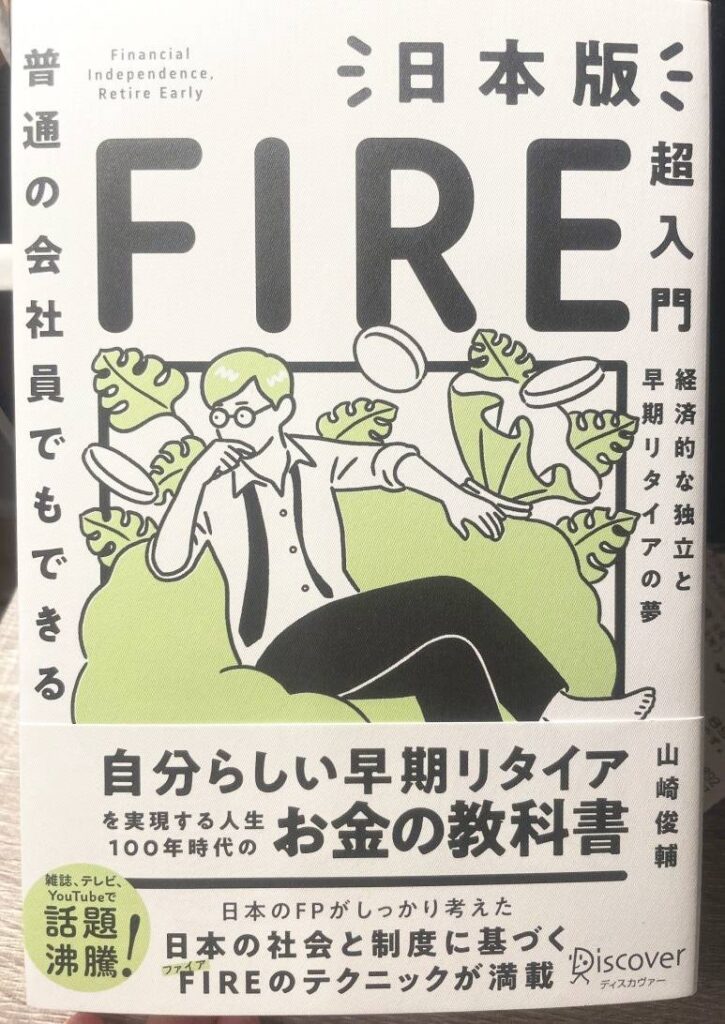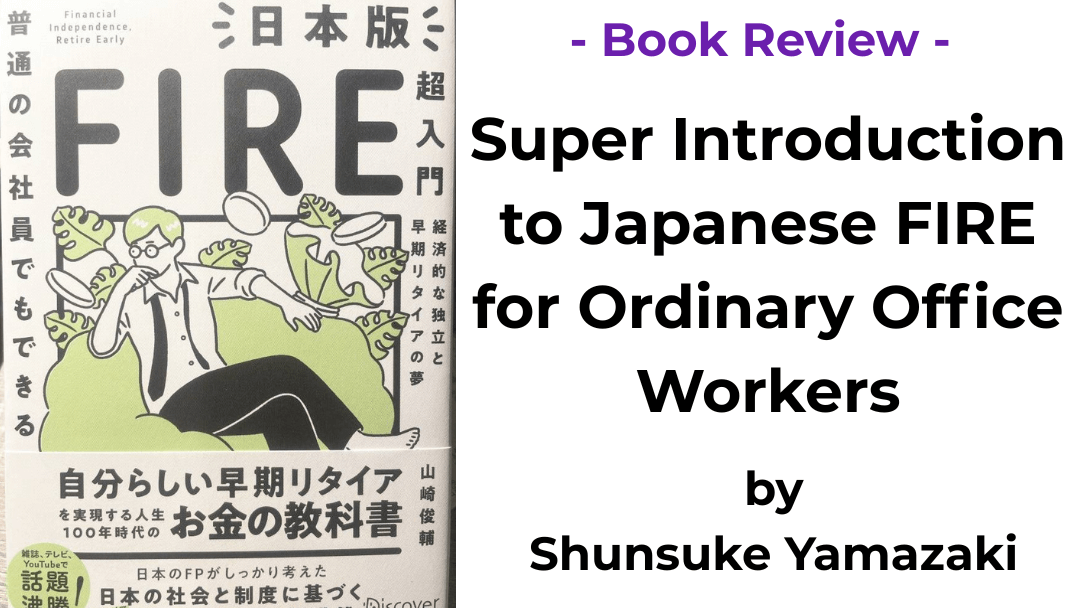
✨Stars — Indicate the difficulty level of the book content.
★☆☆ 1 Star: Easy to read and understand.
★★☆ 2 Stars: Moderate difficulty with some specialized terms.
★★★ 3 Stars: Advanced content with complex ideas and terminology.
About the Book
■Title: Super Introduction to Japanese FIRE for Ordinary Office Workers (普通の会社員でもできる日本版FIRE超入門)
■Author: Shunsuke Yamazaki (山崎 俊輔)
■Publisher: Discover Twenty-One (ディスカヴァー・トゥエンティワン)
Many people have a dream at least once in their lives: FIRE (Financial Independence, Retire Early). FIRE is not just about retiring early, but about managing and investing your assets wisely in order to broaden your choices in life. In recent years, FIRE has been drawing great attention in Japan, especially among younger office workers.
The book I would like to introduce here is “Super Introduction to Japanese FIRE for Ordinary Office Workers”, which can truly be called a “textbook about money.” It is based on Japanese society and systems, providing practical knowledge for achieving FIRE in Japan. There are countless books about FIRE, but if the content does not fit your actual environment or system, it is of little use. In that respect, this book offers particularly practical guidance for ordinary workers living in Japan.
Moreover, it is written in a way that even those with almost no financial knowledge can easily understand. For those who are interested in FIRE but have been unsure where to start, this book will serve as a helpful first step.
Summary
This book is an introductory guide that presents a path for ordinary office workers in Japan to achieve FIRE. The author views FIRE not simply as early retirement, but as a financial strategy for living more freely.
The book first explains the concept of FIRE and points out what needs to be considered when preparing for it within the framework of Japanese society and its systems. It then emphasizes that mere frugality has its limits, and highlights the importance of increasing one’s income as much as possible. At the same time, it stresses the habit of saving little by little, even if it is just one yen at a time, in everyday life.
Furthermore, the author explains that accumulated money should not be left idle but must be grown through investment. To this end, he provides easy-to-understand explanations of financial products and systems available in Japan. In addition, the book covers the basic financial knowledge, taxes, and pensions that are essential to understand when preparing for FIRE.
The author also introduces several concrete patterns of how to put FIRE into practice, helping readers choose the method best suited to their own circumstances. Finally, he offers advice on asset management and lifestyle maintenance to ensure stability even after achieving FIRE.
Ultimately, this book can be described as an introductory textbook that answers the fundamental questions of how to earn money, how to spend it, and how to grow it, all within the realistic framework of Japanese institutions and systems. For those who have only admired the idea of FIRE from a distance, it provides a practical first step toward making it a reality.
Notable Quotes
■「年収をもっと増やす」「ムダな支出を減らす」「できるだけ高利回りで増やす」
“Increase your annual income,” “Cut unnecessary expenses,” and “Grow your money at the highest possible return.”
■能力があるはずのあなたに、適切なギャラを提示できない今の会社が悪いのです。
It is your current company’s fault if they cannot offer the proper compensation to someone like you who clearly has ability.
■結婚していない人がFIREを目指すのは、自分ひとりの人生をしっかり自覚し、自分で自分を守るチャレンジです。
For someone who is not married, aiming for FIRE is a challenge of fully recognizing one’s own life and taking responsibility to protect oneself.
My Thoughts
What the author emphasizes most in this book is to earn more, spend less, and save more (by growing your assets through investment). These may seem like simple and basic principles, but I believe they are the true core practices for achieving FIRE. If even one of these three elements is neglected, the path to FIRE may become much longer and more difficult.
I myself am also pursuing FIRE. However, for me, it is not just about early retirement, but about creating an environment where I can continue working for myself throughout my life. In a way, it can be seen not as an early retirement from being an office worker, but rather as a transition to a lifelong career that suits me.
This book explains financial concepts in a way that is easy to understand, based on the living environment and financial systems in Japan where I currently live. I believe that simply following the author’s advice can bring me closer to achieving my goals. Even if one is not aiming specifically for FIRE, this book is still very useful for developing a sound understanding of the basics of money.
What left the strongest impression on me was the author’s perspective on life after FIRE. According to him, even in the case of a typical retirement, the amount of free time left is about 110,000 hours. If one achieves FIRE, that time doubles. Spending such a long time purely as free time may be enjoyable, but if that time can be used to make one’s life even more valuable and beautiful, it would be even more fulfilling. In this sense, I too am determined to achieve my goal of creating a lifelong career.




Comments